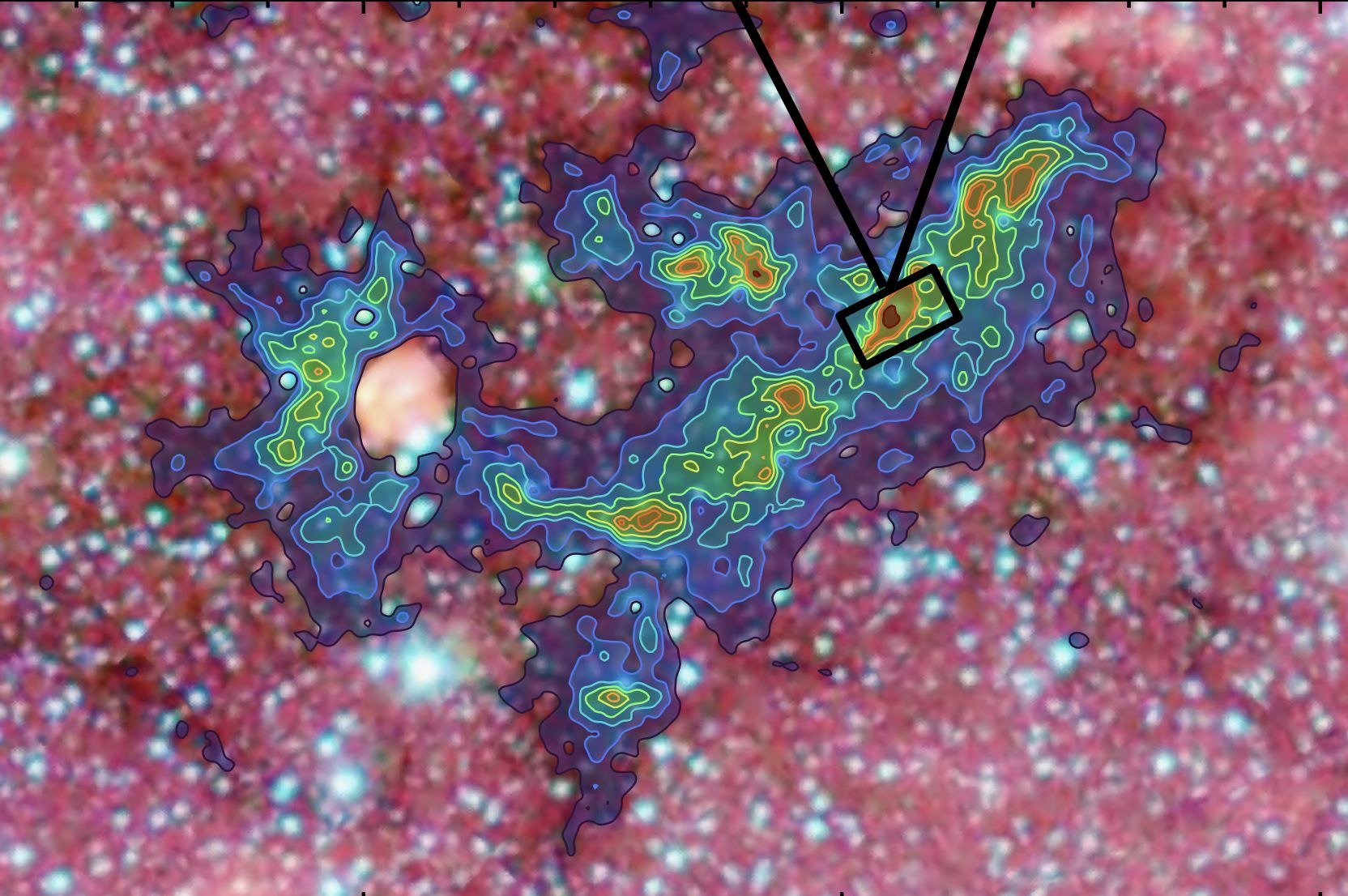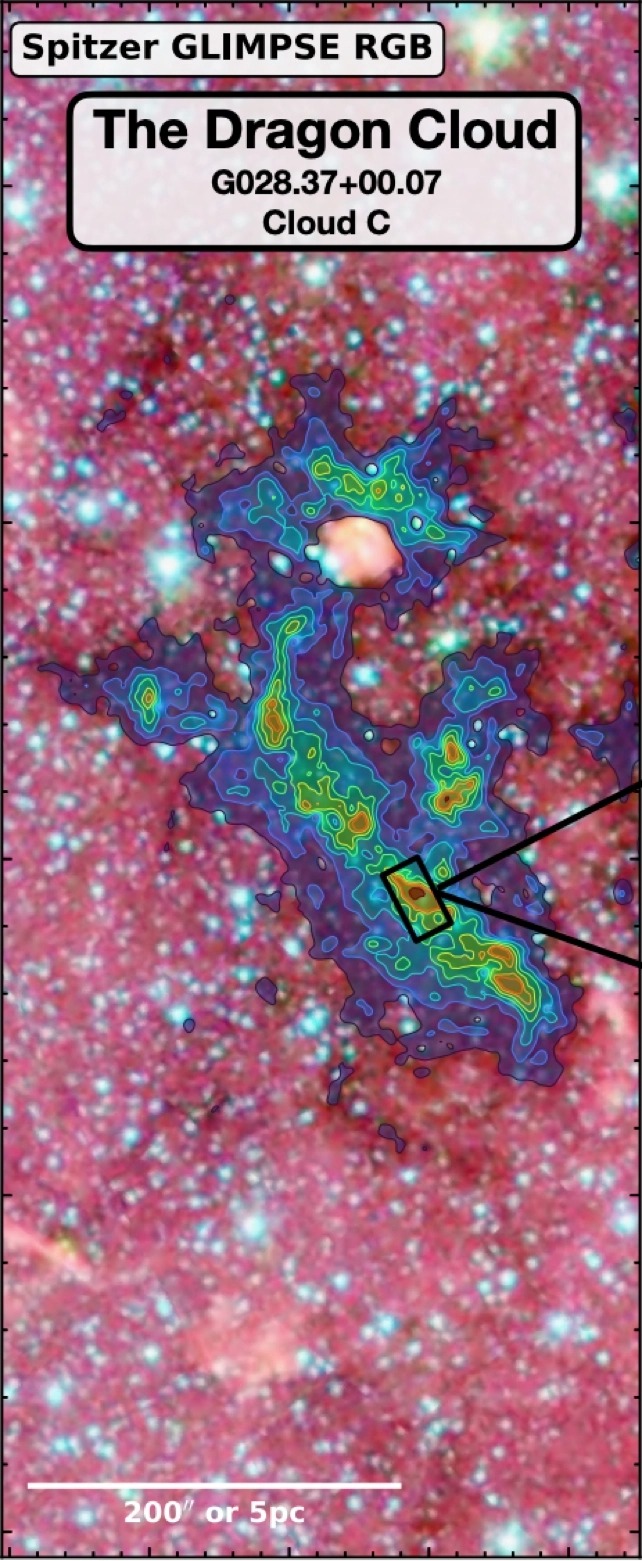For decades, astronomers have been arguing about the origin of the most massive stars in the Universe. One of the greatest problems that all theories face is the lack of observations. Massive stars are relatively rare, so they are difficult to catch at the time of formation. But new observations of the so-called “Dragon Cloud” may hold the key to solving this mystery.

A team of astronomers used the ALMA telescope in the Atacama Desert in northern Chile to study the “Dragon” — a dense cloud of molecular hydrogen, which is the site of active star formation. During the observations, several areas of active star formation were discovered, as well as a strange dense group where there were no newborn luminaries at all.
After further investigation, the team has discovered that the central clot consists of two separate regions. One of them contained matter weighing more than 30 solar masses, and the other contained only two solar masses. According to their observations, these clumps were very dense and actively collapsed, which indicated that stars would soon begin to form in them.

The most important thing is that the detected clots did not break up into smaller ones during the collapse. Scientists have an assumption about the model of “core accretion” of star formation. In this model, the most massive stars collapse from single gas clouds and begin their lives with an incredibly large mass. Observations confirm this theory. Therefore, scientists can say with confidence that for the first time they have observed a giant cloud of gas, from which, in all probability, a rare giant star can be born.
Astronomers have called for more detailed observations of the “Dragon Cloud” to further unravel the mystery of the formation of massive stars.
Earlier we reported on how James Webb saw the first phase of star formation in early galaxies.
Conclusions are published on the arXiv preprint server.
Follow us on Twitter to get the most interesting space news in time
https://twitter.com/ust_magazine

